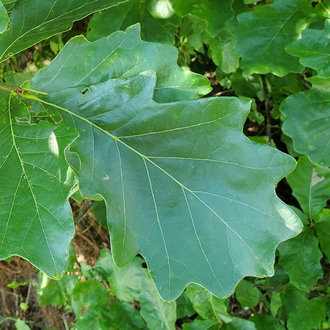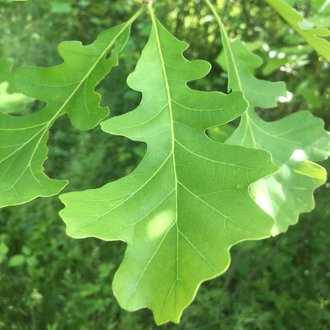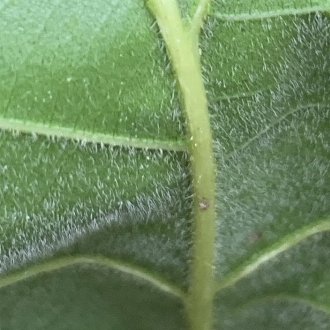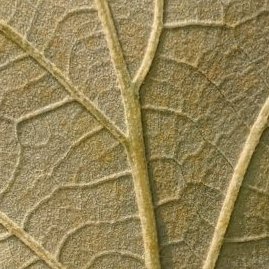Swamp White Oak vs Bur Oak
Bur oak and swamp white oak are visually similar and can occur in the same habitat where their ranges overlap. However, certain key characteristics of bark, leaves, and acorns can usually distinguish them. Swamp white oak is usually only found on moist sites, whereas bur oak can also occur on dry uplands. Bur oak prefers calcium-rich soils, whereas swamp white oak is more tolerant of acidic soils. These two species can hybridize and intergrade, so it may not be possible to identify all individuals.
Swamp White Oak (Quercus bicolor) | Bur Oak (Quercus macrocarpa) |
A large white oak native to eastern North America, favoring poorly-drained habitats. | A rugged oak native to North America, with a wide distribution, ranging farther west and north than most oaks that also occur in the east. |
Bark peels on young branches. Rugged ridges do not appear until branches reach a larger diameter. Photo © , CC BY-SA 4.0. | Bark forms stiff, rugged ridges on young branches, not usually peeling. Photo © Christian Grenier, Public Domain. |
Scales close to the tip of the acorn cap have shorter tips. Some scales farther back on the cap may have longer tips. Cap covers 1/3rd to 1/2 the acorn. Photo © luka.r.s (Flickr), CC BY-SA 4.0. | Scales at the edge of acorn cap have elongated tips which curl backwards, creating a "mossy" appearance. Cup covers 1/2 or more of the acorn. Photo © Lisa Winnett-Pequeno, CC BY 4.0. |
Side veins are usually straighter, with most remaining at a 45° angle to the leaf midrib. Photo © , CC BY-SA 4.0. | Side veins from the leaf's halfway point and closer to the base, often curve outward, with some curving as far as to point perpendicular to the midrib as they approach the leaf margin. Photo © askalotl, Public Domain. |
Leaf undersides velvety to the touch, reflecting the presence of erect hairs, visible in a crisp photograph. Photo © Jeff Clark, CC BY 4.0. | Leaf undersides have hairs, but they are closely pressed against the leaf surface. Not always visible in a photo. There are no erect hairs and the leaf texture feels less velvety to the touch. Photo © Benoit Renaud, CC BY 4.0. |
References & External Resources
These short lists show only links helpful for ID. For a complete list of references and resources also covering other aspects of ecology, visit the links section of the full article on each plant, which is the first entry here.










